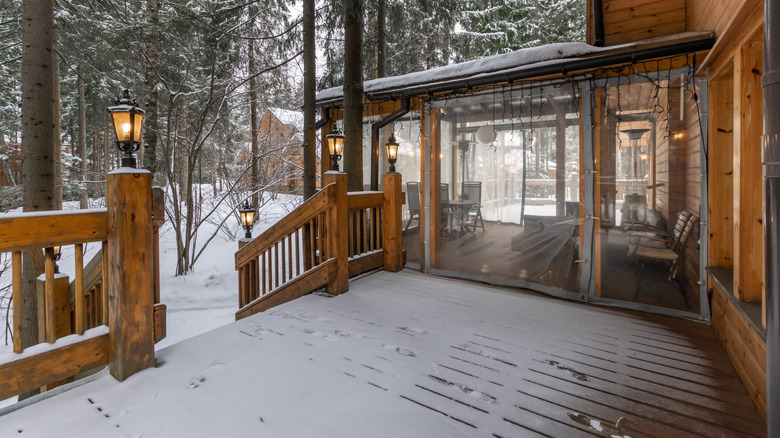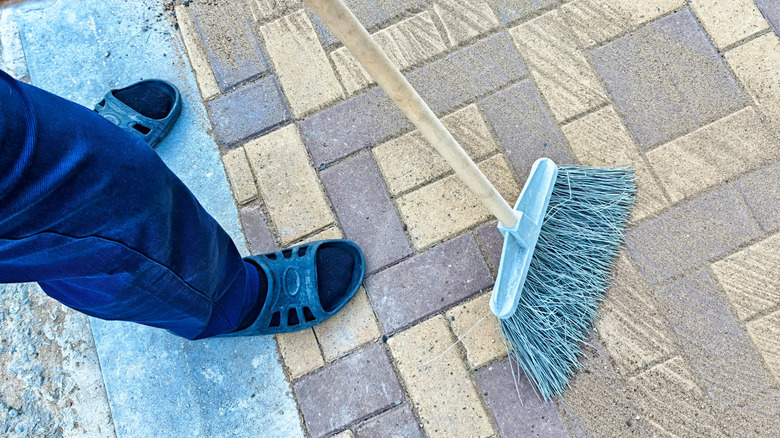How To Winterize Your Deck Based On The Type Of Material You Have
The best time to protect your home from the winter elements is during the fall. Wood, composite, paver, and concrete patios are exposed to the harsh winter weather all season long, which can damage your deck and shorten its lifespan. A deck that is not winterized is more vulnerable to damage from repeated freeze-thaw cycles and moisture, which can lead to mold and mildew growth or cause the wood to rot. Snow feels light when it is falling, but accumulated snow and ice increases the weight on your deck. When this happens repeatedly, it can result in structural issues. To winterize your deck, it should first be cleaned and decluttered. Then, depending on whether it is wood, composite, pavers, or concrete, you'll need to seal or fill the joints.
Cold temperatures, ice, snow, and freeze-thaw cycles can take a toll on your deck. Taking the time to winterize your deck helps to prevent damage, preserve the structural integrity of the material, and reduce maintenance costs. Further, there are simple ways to protect your deck this winter that don't require a lot of time or money.
Winterizing wood and composite decks
The first step to winterize your wood deck is to remove everything from it, including furniture, potted plants, and grills. Visually inspect the deck for signs of trouble, such as mold, rotted wood, loose or cracked boards, and places where screws or nails are missing. Thoroughly clean the deck by sweeping up debris and washing the surface. Then complete any needed repairs, such as replacing missing screws or broken boards.
Once the deck has been cleaned and dried, you can take steps to protect it from the elements. The number one thing to do to protect your wood deck in the winter is to seal it. A good sealer protects wood from moisture, rotting, mold, and mildew. This is a DIY job that can be completed in a weekend. Apply sealer in a thin coat using a quality roller or brush. Start at the far side and work toward the exit to avoid walking on wet sealer. Allow the deck to dry for at least 24 hours.
Composite decks are moisture resistant and withstand harsh weather better than wood, so they don't need a sealant. While a composite deck requires less maintenance, it is important to keep it clean to avoid staining. Before the snow arrives, rinse the deck and scrub it with warm, soapy water or powerwash the deck. Heavy snow over a prolonged period of time can weaken your deck, so have a plan to clear the snow in winter, regardless of deck material.
Preparing concrete and paver patios for winter
Concrete and paver decks should also be prepared for winter. Both are vulnerable to damage caused by freeze-thaw cycles. To winterize your concrete deck, first, remove any furniture and planters from the patio and clean the surface thoroughly. This clears the area for you to inspect the concrete for cracks. Repair any cracks that are wider than 1/8 inch and apply sealant to protect the concrete from the elements.
Like concrete decks, it's best to remove heavy objects from a paver patio to prevent the material from shifting during freeze-thaw cycles. Clean the deck thoroughly and look for signs of settling. Then fill the paver joints with polymeric sand to seal the cracks and prevent ice from forming between pavers, which can damage them.
Regardless of the decking material, you still need to maintain the area after winterizing it. For example, to clear snow from your deck without causing any damage, avoid using metal shovels and don't use salt to melt ice. The time and effort you put into preparing your outdoor areas for winter will pay off when the warmer weather returns.


